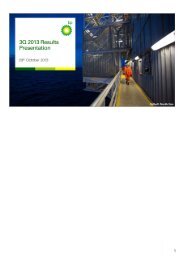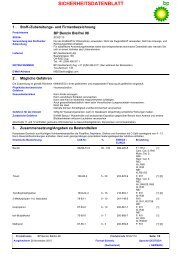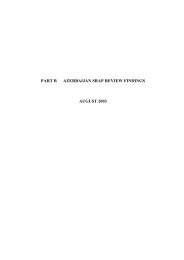You also want an ePaper? Increase the reach of your titles
YUMPU automatically turns print PDFs into web optimized ePapers that Google loves.
Top tankers<br />
British Emperor<br />
1916-1941<br />
The British Emperor<br />
(above) was <strong>the</strong> first<br />
vessel to carry <strong>the</strong><br />
‘British’ name, a tradition<br />
that continues today.<br />
Her first voyage carried<br />
fuel oil from Abadan in<br />
Persia (now Iran) back to<br />
<strong>the</strong> UK. On 7th May<br />
1941, during a voyage<br />
from Durban, South<br />
Africa to Abadan, she<br />
was captured and sunk<br />
by <strong>the</strong> German raider<br />
Pinguin at a position 480<br />
km (300 miles) south,<br />
sou<strong>the</strong>ast <strong>of</strong> Socotra, <strong>of</strong>f<br />
<strong>the</strong> coast <strong>of</strong> Yemen.<br />
<strong>BP</strong> Shipping has a long, illustrious history spanning much<br />
<strong>of</strong> <strong>the</strong> 20th century. During that time, it witnessed many<br />
industry and company ‘firsts’.<br />
1 3 5<br />
British Valour<br />
1927-1953<br />
In 1942, <strong>the</strong> British<br />
Valour became <strong>the</strong> first<br />
<strong>of</strong> <strong>the</strong> company’s tankers<br />
to carry out <strong>the</strong><br />
important task <strong>of</strong><br />
regularly refuelling HM<br />
Escorts vessels while at<br />
sea, on <strong>the</strong> UK to<br />
Freetown, South Africa<br />
route. In <strong>the</strong> same year,<br />
<strong>BP</strong> suffered its worst<br />
shipping losses <strong>of</strong> <strong>the</strong><br />
Second World War.<br />
British Glory<br />
1927-1954<br />
First built in 1927, <strong>the</strong><br />
British Glory became <strong>the</strong><br />
first company vessel to<br />
be fitted with a fore and<br />
aft bridge in 1943 so that<br />
it could carry out<br />
refuelling duties while<br />
still at sea. It also<br />
suffered torpedo damage<br />
in 1940 during <strong>the</strong><br />
Second World War.<br />
British Explorer<br />
1969-1981<br />
The British Explorer was<br />
<strong>the</strong> company’s first<br />
215,000 dead weight<br />
tonnage (dwt) very large<br />
crude carrier (VLCC).<br />
During <strong>the</strong> course <strong>of</strong> <strong>the</strong><br />
1970s, VLCCs <strong>of</strong> up to<br />
270,000dwt began to<br />
join <strong>the</strong> fleet. As <strong>the</strong><br />
vessel size grew,<br />
numbers <strong>of</strong> tankers<br />
decreased.<br />
Factfile<br />
British Trader<br />
2002-<br />
The British Trader was<br />
one <strong>of</strong> <strong>the</strong> first <strong>of</strong> <strong>the</strong><br />
new ‘Trader’ class<br />
double-hulled vessels<br />
carrying liquefied<br />
natural gas (LNG). These<br />
vessels were <strong>the</strong> first to<br />
be ordered for general<br />
trading instead <strong>of</strong> on a<br />
contract basis. In o<strong>the</strong>r<br />
words, <strong>the</strong>y were free to<br />
trade wherever <strong>the</strong><br />
market took <strong>the</strong>m,<br />
instead <strong>of</strong> following a set<br />
‘bus’ route.<br />
<strong>BP</strong> MAGAZINE Issue 1 2009 57




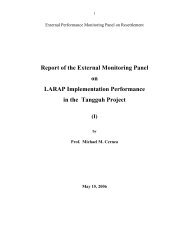
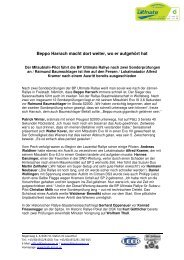
![[PDF] Deepwater Horizon: Accident Investigation Report - BP](https://img.yumpu.com/51697031/1/190x245/pdf-deepwater-horizon-accident-investigation-report-bp.jpg?quality=85)


